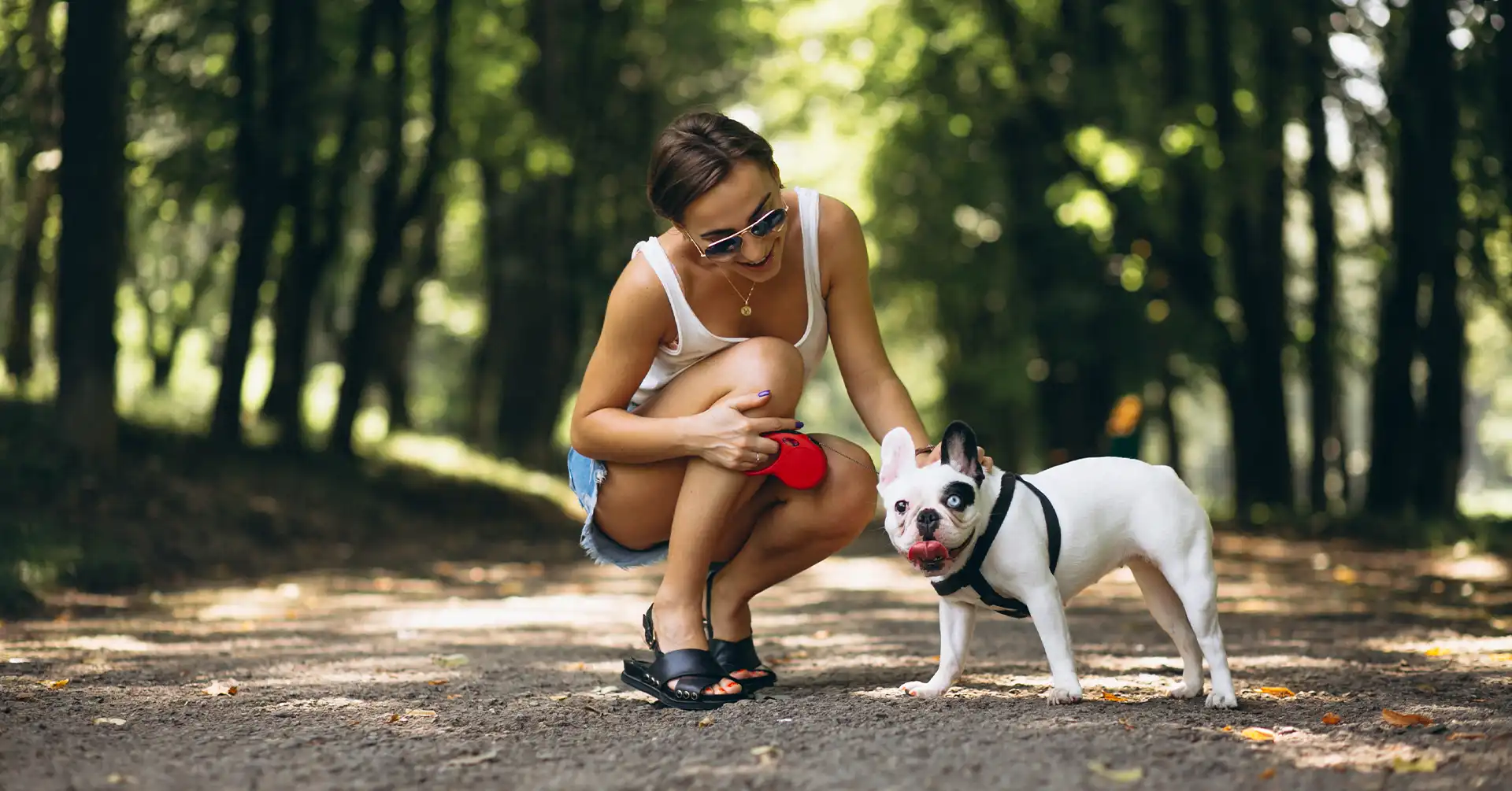When it comes to your furry companion’s well-being, ensuring a smooth and stress-free boarding experience is crucial. Many pet owners find themselves in situations where they need to leave their dogs in the care of boarding facilities due to travel, work commitments, or emergencies. In such cases, preparing your dog adequately for their boarding stay becomes paramount.
Importance of Preparing Your Dog for Boarding
Preparing your dog for boarding is not just a routine task; it is a responsible step that guarantees your dog’s safety, comfort, and happiness during your absence. Dogs, like humans, thrive on routine and familiarity. Sudden changes in their environment can lead to stress and anxiety. By preparing your dog beforehand, you provide them with a sense of security, ensuring they feel safe even in a new environment.
Benefits of a Successful Boarding Experience
A successful boarding experience can significantly impact your dog’s overall well-being. Dogs that are well-prepared for their boarding stay exhibit reduced stress levels, maintain their regular eating habits, and engage positively with other dogs and staff. This positive experience enhances their socialization skills, making them more adaptable and confident.
Additionally, a smooth boarding experience ensures that your dog receives the necessary attention, exercise, and mental stimulation, promoting their physical and mental health. It also enables the boarding staff to identify any specific needs or preferences your dog may have, allowing for personalized care and attention.
By taking the time to prepare your dog for their boarding stay, you not only ease their transition but also contribute significantly to their happiness and contentment. A well-adjusted dog not only enjoys their time at the boarding facility but also returns home in good spirits, making the entire experience a positive one for both you and your beloved pet.
Finding the Right Boarding Facility
When it comes to ensuring a positive experience for your furry friend during their boarding stay, selecting the right facility is crucial. Here’s how you can do it:
1. Researching Boarding Facilities
Start your journey by conducting thorough research on various boarding facilities in your area. Look for reviews and testimonials online. Seek recommendations from friends, family, or your veterinarian. Pay attention to facilities that consistently receive positive feedback regarding their services, cleanliness, and staff expertise.
2. Visiting Potential Facilities
Once you’ve narrowed down your options, take the time to visit the potential boarding facilities in person. This visit allows you to see the environment where your dog will stay. Look for cleanliness, well-maintained living spaces, and secure enclosures. Observe the interactions between staff and dogs to gauge their level of care and professionalism.
3. Asking Important Questions
During your visit, don’t hesitate to ask essential questions to the facility staff. Inquire about the daily routine for dogs, the frequency of exercise and playtime, feeding schedules, and the qualifications of the caregivers. Ask about the protocols in place for emergencies and medical situations. Clear communication with the staff helps you understand the level of attention and care your dog will receive.
Assessing Your Dog’s Health and Behavior
When it comes to ensuring a positive experience during your dog’s boarding, it’s crucial to assess both their health and behavior. This step ensures that your furry friend stays happy and healthy while you’re away.
1. Veterinary Check-up and Vaccinations
Start by scheduling a visit to your veterinarian. Make sure your dog is up-to-date on all vaccinations required by the boarding facility. Vaccinations protect your dog from diseases and keep other dogs at the facility safe too. Your vet can also provide a general health check-up, ensuring your dog is fit and healthy for their boarding adventure.
2. Behavioral Assessment
Understanding your dog’s behavior is equally important. Determine how your dog interacts with other dogs, strangers, and new environments. If your dog tends to get anxious or aggressive in certain situations, it’s essential to inform the boarding staff. This information helps them tailor their care to meet your dog’s specific needs, ensuring a comfortable and stress-free stay.
3. Special Needs and Medications
If your dog has any special needs, such as dietary restrictions or specific medications, be sure to communicate these clearly with the boarding facility. Provide detailed instructions on administering medications and any specific routines your dog follows. This ensures that your dog’s health requirements are met, promoting a safe and supportive environment during their stay.
Training and Socialization: Preparing Your Dog for a Positive Boarding Experience
Basic Obedience Training: Setting the Groundwork
Ensuring your dog is well-behaved and responsive to commands is fundamental for a successful boarding experience. Basic obedience training includes teaching your dog commands such as sit, stay, and come. These commands are not only useful in day-to-day situations but also provide a sense of security and structure for your dog in an unfamiliar environment.
Socialization with Other Dogs and People: Building Confidence
Socialization is key to helping your dog feel comfortable around new faces, both human and canine. Arrange playdates with other dogs and introduce your dog to various people in different settings. This exposure helps your dog develop social skills, reducing anxiety when interacting with strangers during their stay at the boarding facility.
Familiarizing Your Dog with Boarding Facility Routines: Easing Transition
Visit the boarding facility with your dog before their stay. Let your dog explore the surroundings, meet the staff, and become accustomed to the facility’s routines. Familiarity with the environment, the sights, smells, and the people, can significantly reduce your dog’s stress and make them feel more at ease during their stay.
Packing for Your Dog’s Stay: Making Your Dog Feel at Home
Essential Items to Pack: Ensuring Comfort and Well-being
When preparing for your dog’s boarding, pack essentials like their regular food, medications (if any), and feeding instructions. Include your dog’s favorite toys and blanket to provide comfort and a sense of familiarity. Having these items around will make your dog feel secure, easing any anxiety they might have during their stay.
Comfort Items from Home: Providing Emotional Support
Including comfort items from home, such as a favorite toy or a blanket with your scent, can provide emotional reassurance for your dog. Familiar scents can comfort your dog and create a relaxing atmosphere, making their boarding experience more pleasant and less stressful.
Labeling and Organizing Your Dog’s Belongings: Ensuring Convenience
Clearly label all your dog’s belongings with their name to avoid confusion. Organize their items in a way that makes it easy for the boarding staff to access and use them. Proper labeling ensures that your dog receives the right food, medications, and care, contributing to their overall well-being and contentment during their stay.
Preparing Your Dog Emotionally for Their Boarding Experience
Gradual Separation Training
Gradual separation training involves getting your dog accustomed to being away from you for increasing periods of time. Start by leaving your dog alone for short durations and gradually extend the time as they become more comfortable. This helps them build confidence and reduces anxiety when they are at the boarding facility.
Familiarizing Your Dog with Boarding Staff
Introducing your dog to the people who will be taking care of them is essential. Arrange for your dog to meet the boarding staff beforehand, allowing them to sniff and interact in a friendly environment. This helps your dog associate the staff with positive experiences, making them feel more at ease during their stay.
Creating a Positive Departure Routine
Establishing a positive departure routine can ease your dog’s anxiety when it’s time to leave for the boarding facility. Spend some quality time with your dog, engage in activities they enjoy, and offer praise and treats. By associating your departure with positive emotions, your dog will feel less stressed about your absence.
Communication with Boarding Staff
Providing Detailed Instructions
Clearly communicate your dog’s routine, dietary preferences, medications, and any specific needs to the boarding staff. Providing detailed instructions ensures that your dog’s daily activities closely resemble their home routine, minimizing stress and promoting a sense of familiarity.
Emergency Contact Information
Share your contact information and provide an emergency contact person who can make decisions on your behalf if needed. This ensures swift communication in case of any concerns, allowing timely decisions regarding your dog’s well-being.
Regular Check-ins and Updates
Regularly check in with the boarding facility to inquire about your dog’s well-being. Getting updates on their activities, meals, and overall behavior provides reassurance. It also allows you to address any concerns promptly, ensuring your dog receives the best care possible during their stay.
Handling Special Situations: Dog’s Boarding
Dealing with Separation Anxiety
Separation anxiety is a common concern when dogs are away from their owners. To help your dog cope, gradually increase the time they spend away from you before boarding. Practice short separations, and gradually extend the duration. Leave your dog with familiar items, like their favorite toy or blanket, to provide comfort during your absence. Reassure them with a calm tone and positive body language before leaving.
Addressing Aggressive Behavior
If your dog displays aggressive behavior, it’s crucial to address it before boarding. Consult a professional dog trainer or behaviorist for guidance. Work on desensitizing your dog to triggers that cause aggression. Positive reinforcement training can help redirect their focus and reward good behavior. Inform the boarding staff about your dog’s triggers and techniques that work to keep them calm.
Handling Medical Emergencies
Prepare for medical emergencies by providing detailed information about your dog’s health to the boarding facility. Share any existing medical conditions, allergies, or medications. Additionally, leave emergency contact numbers, including your veterinarian’s details. Instruct the boarding staff on how to administer medications if necessary. Being proactive about your dog’s health ensures prompt and appropriate care in case of emergencies.
Ensuring a Smooth Transition Back Home: Dog’s Boarding
Easing Your Dog’s Transition
When you bring your dog back home after boarding, ease them into their regular routine. Maintain a calm environment and gradually reintroduce activities. Spend quality time with your dog, reinforcing the bond you share. Provide gentle reassurance and positive reinforcement to help them readjust to their home environment.
Observing Your Dog’s Behavior
Observe your dog closely in the days following their return. Watch for any changes in behavior, appetite, or energy levels. Some dogs may need extra attention and reassurance after boarding. Be patient and understanding, as they might need time to readjust. If you notice persistent changes in behavior, consult your veterinarian or a professional dog behaviorist for guidance.
Reinforcing Positive Experiences
After boarding, reinforce positive experiences by engaging in activities your dog enjoys. Offer praise, treats, and playtime to create positive associations with their boarding experience. This positive reinforcement helps your dog associate boarding with pleasant memories, reducing anxiety for future visits. Celebrate their good behavior and make them feel loved and secure, reinforcing the idea that boarding can be a positive and safe experience.
Conclusion
Preparing your dog for a successful boarding experience requires careful planning, patience, and understanding. By finding the right facility, addressing special situations like separation anxiety and aggressive behavior, and ensuring a smooth transition back home, you can create a positive and comfortable environment for your furry friend. Remember that open communication with boarding staff, along with reinforcing positive experiences, plays a crucial role in making the entire process stress-free for both you and your dog.
Also Read:






